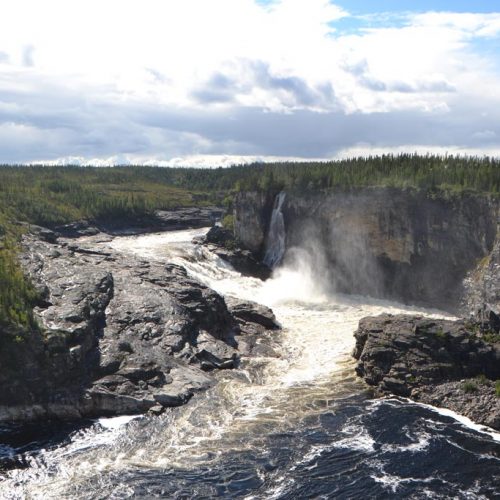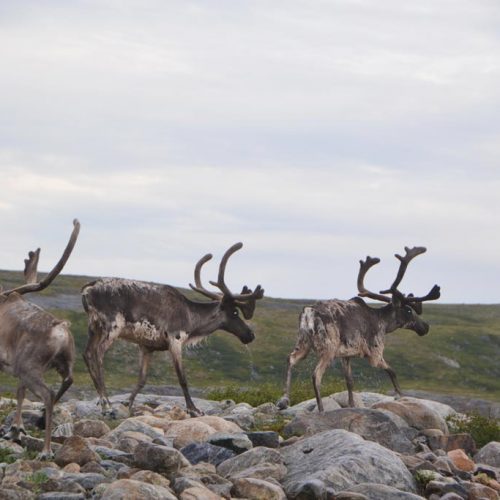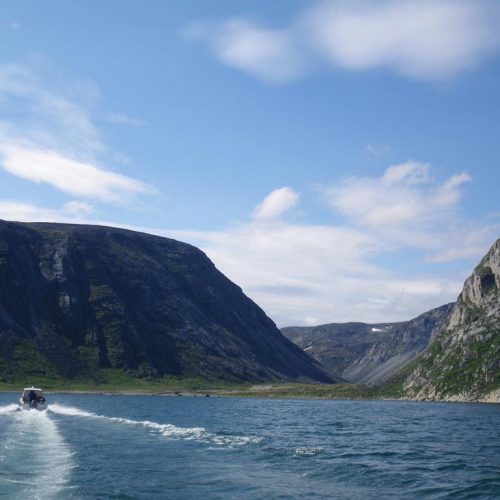Protected areas
in the world
The term “protected areas” is sometimes used in a broad sense or may have a more specific meaning, which varies from country to country or even from region to region.
The International Union for Conservation of Nature (IUCN), an international authority on the status of nature and natural resources and the measures needed to safeguard them, groups protected areas into six categories according to their characteristics (size, location, etc.), and management approaches and objectives (research, protection, recreation, etc.). All categories are important, but they involve varying degrees of human intervention.
Classification of protected areas | IUCN
- Category I — strict protection (strict nature reserve, wilderness area, etc.)
- Category II* — ecosystem conservation and protection (national park, biodiversity reserve, etc.)
- Category III — conservation of natural features (e.g., natural monuments)
- Category IV — conservation through active management (e.g., habitat or species management area)
- Category V — conservation of a protected landscape or seascape
- Category VI — sustainable use of natural ecosystems (e.g., protected area with sustainable management of natural resources)
* All the areas in Nunavik concerned by the current process are currently Category II.
Protected areas in Quebec
The Government of Quebec has drawn on international reference frameworks, especially the IUCN, to establish its definition of a protected area. Thus, the network of protected areas in Quebec aims to “ensure the protection of representative territories of particular ecosystems which, across the network, will cover all ecosystem types in Quebec.”
These ecosystem types are defined in the Quebec Ecological Reference Framework. A territory recognized as a protected area in Quebec has obtained a long-term protection status. It is listed in the Register of protected areas in Quebec [available only in French as Registre des aires protégées au Québec]. The Natural Heritage Conservation Act provides the framework for protected areas legislation in Quebec.
To learn more about the various statuses and what is permitted or prohibited within protected areas, click here.
The Quebec Ecological Reference Framework
The Quebec Ecological Reference Framework is a cartographic tool for the “ecological classification of the territory.” It has several levels of detail, defined mainly by geology (land) and hydrography (lakes and rivers). The framework includes:
- 13 natural provinces in Quebec (level I), including 5 in Nunavik
- 80 natural regions (level II), 27 of which are mostly in Nunavik
To learn more about Quebec’s Ecological Reference Framework, consult the map by clicking here.
Register of Protected Areas in Quebec
A territory recognized as a protected area in Quebec has obtained a long-term protection status. It is listed in the Register of protected areas in Quebec [available only in French as Registre des aires protégées au Québec].
These territories respect:
- the definition of protected area in the Natural Heritage Conservation Act;
- IUCN guidelines.
This includes the following territories:
- biodiversity reserves and proposed biodiversity reserves;
- aquatic reserves and proposed aquatic reserves;
- territorial reserves for protected area purposes;
- Quebec national parks and Quebec national park reserves;
- Canada national parks and Canada national park reserves in Quebec.
Other sites and territories may be protected in Nunavik without necessarily meeting these criteria. They are therefore not listed in the Register and their area is not accounted for, but the scope of their protection, broad or specific, determined or undetermined, and intervening according to a given normative framework (law, regulation, agreement) is in force. This is the case for the Lac Cambrien and Lac Nachicapau area, which is subject to a specific agreement.
To learn more about the territories listed in the Register of protected areas in Quebec, consult the MELCC interactive map by clicking here.
Natural Heritage Conservation Act
The Natural Heritage Conservation Act, passed in 2002 and revised in 2021, has led to the establishment of a network of protected areas and the achievement of targets (% of territory protected) at the international level. Nearly 5,000 sites, belonging to 33 designations (parks, biodiversity reserves, etc.), are part of Quebec’s network of protected areas.
Protected areas in Nunavik
In Nunavik, the network of protected areas currently covers 20.59% of the region, or just over 100,000 km² including 8 new territorial reserves for protected area purposes that were designated in 2020, as well as 8 proposed biodiversity reserves, 1 proposed aquatic reserve, and 3 territorial reserves for protected area purposes designated between 2009 and 2018. Two of the latter reserves have had their boundaries changed in 2020. The overall network also includes 4 national parks and 5 national park reserves.
In accordance with Section 24 of the James Bay and Northern Quebec Agreement (JBNQA) and Section 15 of the Northeastern Quebec Agreement (NEQA), the beneficiaries of these agreements (Inuit, Naskapis, Crees) may exercise their harvesting rights throughout the Kativik Region, including within the boundaries of all types of protected areas.


